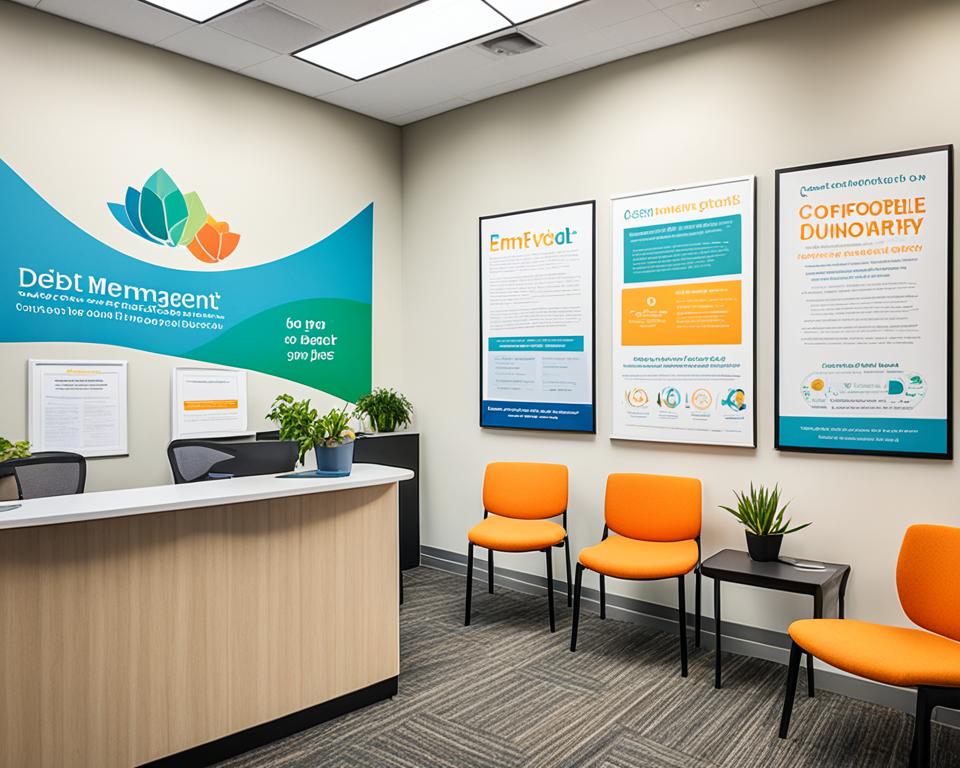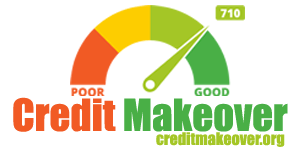For many Americans grappling with high-interest credit card bills, the quest for financial ease often leads to the consideration of debt consolidation. Yet, the traditional route of acquiring a new loan to merge existing debts isn’t suitable for everyone. Fortunately, non-loan debt consolidation provides a viable alternative, offering a pathway to simplifying debts into a single monthly payment—without accruing new loans. This approach is not only a relief to those wary of additional borrowing but also an efficient stride toward better financial management and peace of mind.
Alternative debt consolidation techniques are characterized by their ability to reduce interest rates and thereby, the overall debt burden, without complicating an individual’s current financial situation with additional credit accounts. As such, they remain a preferred choice for people looking for effective debt relief options that align with their personal financial goals and circumstances.
Key Takeaways
- Non-loan debt consolidation merges multiple debts into one easy payment.
- Alternative strategies offer reduced interest rates without new loans.
- Debt relief options can be tailored to individual financial situations.
- Effective debt management promotes financial stability.
- Credit counseling services are crucial in guiding debt consolidation strategies.
Understanding Debt Consolidation Programs
Navigating through the vast landscape of debt consolidation programs can be daunting. However, understanding the available debt management solutions is vital for anyone looking to regain financial stability. If you have been grappling with multiple debts and seeking ways to simplify your payments, diving into the world of debt consolidation could very well be the lifeline you need.
Defining Debt Consolidation Without a Loan
One might wonder, can debts be consolidated effectively without taking on new loans? The answer lies in an ingenious approach where individuals work with credit counselors to combine their debts into one single monthly payment. This arrangement often results in reduced interest rates, allowing for a more straightforward pathway to debt freedom. Such debt consolidation strategies circumvent the need for additional borrowing, focusing instead on restructuring existing debts.
Types of Consolidation Programs
Various debt consolidation programs cater to different financial situations. Some individuals may benefit from joining a program that focuses on lower interest rates and unified payments, while others with more dire financial circumstances might need to explore debt settlement. Both strategies aim to provide a structured plan for overcoming debt but do so with distinct methodologies tailored to specific circumstances.
Nonprofit Debt Consolidation Explained
Nonprofit debt consolidation is a beacon of hope for many. Organizations such as InCharge Debt Solutions specialize in creating debt management solutions that are both compassionate and practical. They operate on the principle of equipping clients with the tools necessary for debt management, including comprehensive budgeting and actionable repayment plans, all without the drawback of incurring further debt.
Renowned for their personalized approach, these nonprofit entities are acclaimed for their dedication to constructing a feasible financial future for their clients. The CEO of the National Federation of Credit Counseling champions the personalized plans they offer, ensuring that each client receives a tailored budget that makes their to path to financial health clear and achievable.
Non-Loan Debt Consolidation
Debt relief options that circumvent the need for acquiring new loans are becoming increasingly vital for many seeking financial freedom. Known as alternative debt consolidation, these strategies leverage the amalgamation of debts into a single payment plan without the additional weight of a new loan. This approach not only simplifies repayment schedules but can effectively lower interest rates and monthly payments, providing a clearer path towards debt resolution.
When considering the realm of debt consolidation without a loan, one must understand the value it brings to long-term financial stability. The key to success lies in rigorous budgeting and financial counseling, which together build the foundation of a savvy debt management plan. It is a controlled process designed to empower individuals to live within their means while methodically eliminating debt.
| Features | Benefits |
|---|---|
| Single Monthly Payment | Simplifies personal finance management |
| Lowered Interest Rates | Reduces the overall cost of debt |
| No New Loan Required | Prevents further indebtedness |
| Counseling and Support | Assists in financial planning and education |
| Realistic Budgeting | Encourages sustainable spending habits |
Embarking on a journey toward debt relief is more approachable when guided by professionals who tailor consolidation options to individual needs. The relief stemming from restructuring existing debt, without adding new loans, significantly alleviates the anxiety associated with scattered and overwhelming repayment demands. By committing to a methodical and well-planned budget, individuals reclaim control over their financial destiny, paving the way to a debt-free life.
Nonprofit Credit Counseling Services
Embarking on a journey towards financial stability, nonprofit credit counseling services emerge as a beacon of hope for those struggling with debt. As the intricacies of personal finance pose challenges for many, the expertise provided by these organizations is not simply helpful—it’s transformative. In the realm of debt management solutions, their role is pivotal—offering not only relief but also the empowerment to seize control of one’s financial future.

Role of Nonprofit Credit Counselors
At the core of nonprofit credit counseling services are the credit counselors themselves. These dedicated professionals are at the frontlines, dissecting the financial woes of their clients to forge a path of escape from the burden of debt. Their expertise in assessing financial situations, crafting personalized budget plans, and offering free, unbiased advice make them indispensable allies in the fiscal fight against overwhelming debt.
Developing Action Plans for Debt Management
A clear, well-defined plan is essential for any successful endeavor, and in the context of overcoming debt, it’s the action plan that provides the roadmap. Counselors collaborate with clients to develop strategies tailored to their specific circumstances, shining light on the best path forward with consolidated repayment options. By examining income, expenses, and financial objectives, they construct a sustainable plan that serves as a guide on the quest towards a debt-free life.
Pros and Cons of Credit Counseling
While credit counseling brings numerous advantages, such as reduced interest rates and strategic action plans, it’s important to consider the full spectrum of what these services entail. There may be fees associated with the counseling, and the rigor of adhering to the plan can sometimes prove challenging. Nevertheless, the ultimate goal—a healthier credit score and a deeper understanding of personal finance—often justifies the investment in these vital services.
| Company | Services Offered | Fee Structure | Client Support | Education Resources |
|---|---|---|---|---|
| GreenPath Financial Wellness | Credit counseling, Debt management plans | May include one-time setup and monthly maintenance fees | Personalized support from certified counselors | Workshops, webinars, and financial tools |
| Money Management International | Debt and budget counseling, Financial education | Varying based on the program and state regulations | 24/7 online and phone support | Extensive library of financial education articles and videos |
Credit Card Balance Transfer Options
When it comes to debt consolidation without a loan, leveraging credit card balance transfer options can be a pivotal move for many individuals seeking debt management solutions. This strategy involves transferring the outstanding amounts from high-interest credit cards to a new card, typically one that offers a 0% introductory APR rate. The primary advantage here is evident—the absence of interest accumulation during the promotional period directly translates into considerable savings for the debtor.
This maneuver, however, does come with its own set of parameters that require careful consideration. Key among them is the stipulation of balance transfer fees—costs incurred to shift the debt which can range from 3% to 5% of the transferred amount. These fees should be assessed against potential interest savings to ensure genuine cost-effectiveness.
| Consideration | Benefit | Caution |
|---|---|---|
| Introductory APR | Interest savings | Must pay off balance before end of period |
| Balance Transfer Fee | Less than potential interest | Adds to upfront costs |
| Credit Limit | Can consolidate multiple balances | Should not exceed 30-40% of credit limit |
Moreover, if the debt is not fully paid off by the end of the promotional period, one will face the standard APR, which can sometimes be higher than that of the original credit cards. Hence, the window allotted should be utilized with a well-structured repayment plan in mind, avoiding the pitfalls of transitioning to potentially higher interest rates post-promotion.
It’s crucial for those considering this option to fully understand the terms of the balance transfer card issuer and to have a clear-cut plan for the repayment of the transferred balance within the advantageous timeframe provided. This meticulous approach to debt management can facilitate appreciable headway in overcoming financial burdens, without the necessity of additional loans.
Home Equity Strategies for Debt Consolidation
Exploring home equity strategies can uncover opportunities to consolidate debt and improve fiscal health. Homeownership offers avenues such as cash-out refinance, home equity loans, and HELOCs (Home Equity Lines of Credit) which leverage accrued equity as a means of settling existing debts. While these methods frequently boast lower interest rates and the simplicity of a single payment, it’s crucial to grasp each option’s nuances and inherent risks thoroughly.
Cash-Out Refinance as an Alternative
With a cash-out refinance, homeowners can refinance their mortgage for more than they owe and then pocket the difference. This lump sum can be harnessed to clear multiple debts, potentially leading to a streamlined financial landscape. However, it’s imperative to ascertain that the new mortgage conditions, including the interest rate and duration, align with long-term financial security.
Home Equity Loans vs. HELOC
Comparing home equity loans to HELOCs reveals two different borrowing models. Home equity loans provide a lump sum with a fixed interest rate and repayment period, while HELOCs offer a revolving credit line with variable rates. The choice between the certainty of a loan and the flexibility of a line of credit can significantly impact one’s debt consolidation strategies and financial resilience.
The Risks of Securing Debt Against Your Home
Securing debt against home equity is not without risk. One of the most severe is the potential for foreclosure should one fail to meet repayment obligations, effectively jeopardizing homeownership. Additionally, these approaches often include upfront costs, such as closing fees or appraisal costs, which need to be accounted for when calculating overall benefits.
| Debt Consolidation Option | Interest Type | Repayment Model | Risk Level |
|---|---|---|---|
| Cash-Out Refinance | Fixed or Variable | Lump Sum | Medium-High |
| Home Equity Loan | Fixed | Installments | Medium |
| HELOC | Variable | Revolving Credit | Medium |
In summary, leveraging home equity can be an effective way to consolidate debt and alleviate the burden of myriad payments. Yet it’s essential to undertake meticulous financial planning and consider the possibly high stakes, ensuring the chosen strategy dovetails with broader economic objectives.
Creating a Budget to Manage Debt
In the realm of personal finance, debt management solutions often begin with the foundational task of creating a budget. A well-planned budget allows for a clear overview of income versus expenditures, paving the way for effective debt consolidation strategies. It’s about more than simply tracking expenses; it’s about making strategic adjustments to your financial habits to foster debt reduction.

Starting with the basics involves examining monthly income and categorizing all expenses. Let’s break it down with a simplified budget template:
| Income Sources | Fixed Expenses | Variable Expenses | Debt Obligations | Potential Savings |
|---|---|---|---|---|
| Monthly Salary | Rent/Mortgage | Groceries | Credit Card Payments | Dining Out |
| Secondary Income | Utilities | Entertainment | Student Loan | Coffee Shops |
| Other Income | Insurance | Gas/Fuel | Car Loan | Subscriptions |
The goal is to ensure that the total income exceeds the sum total of expenses and debt obligations. If it doesn’t, this is where creative budgeting enters the picture. For instance, reallocating funds from ‘Potential Savings’, such as money spent on dining and coffee, towards ‘Debt Obligations’ can accelerate debt payoff.
- Track your spending to identify areas where cuts can be made.
- Focus on needs over wants, and prioritize debt payment.
- Consider side gigs or selling unused items to increase income.
“A penny saved is a penny earned,” Benjamin Franklin once wisely said, and this holds particularly true when tackling indebtedness.
Adapting your financial behavior may require sacrifices, but the payoff will be a reduction in debt and a feeling of financial control. Remember, managing debt effectively isn’t about making huge leaps overnight; it’s about taking consistent, manageable steps towards a debt-free life.
Personalized Debt Relief Plans
When facing debt, one size does not fit all. Each individual’s financial scenario is unique, requiring personalized debt relief plans to navigate out of financial turbulence effectively. By examining personal finances with a fine-tooth comb, consumers can partner with the right debt consolidation companies to create a path toward financial stability that’s as unique as their needs.
Choosing an alternative to one-size-fits-all debt solutions empowers individuals to tackle their specific debt challenges head-on. Such alternative debt consolidation methods often prove to be more effective as they’re intricately designed after an intensive analysis of debts, income, and expenses.
Assessing Your Financial Situation for Relief Plans
An honest financial self-assessment is the cornerstone of a truly personalized plan. This involves an all-encompassing analysis of not just your income and debts, but also your spending habits and saving patterns. This will illuminate the areas that need immediate attention and those that will benefit from long-term strategies.
Choosing the Right Debt Consolidation Companies
Finding the right ally in your journey to debt freedom is critical. Analyzing the offerings of various debt consolidation companies will reveal those that match your specific financial circumstance and offer the most suitable relief plans. Companies like InCharge Debt Solutions stand out by offering plans that adapt to your financial capabilities, paving a smoother road toward debt relief.
| Company | Programs Offered | Customization Level | Support & Education |
|---|---|---|---|
| InCharge Debt Solutions | Debt Management Program | High | Extensive |
| Debt Reduction Services | Debt Settlement | Moderate | Moderate |
| Freedom Debt Relief | Customized Program | Varied | Comprehensive |
Debt Consolidation Without a Loan
For the many Americans struggling with multiple debt accounts, debt consolidation without a loan offers a beacon of hope. This route provides an approach to reducing debt without the risks associated with taking on new loans. Focusing on innovative and responsible financial practices, individuals can merge various high-interest debts into a single monthly payment with potentially lower interest rates. This method not only simplifies the repayment process but also contributes to long-term debt relief and personal financial stability.
Identifying viable alternative debt consolidation strategies requires a solid grasp of personal finance. It often involves engaging with certified nonprofit credit counseling organizations that specialize in crafting actionable debt management plans. These institutions offer valuable guidance, ensuring that individuals receive a customized plan that aligns with their financial situation, ultimately fostering a path toward debt relief without incurring additional credit liabilities.
Consolidating debt without acquiring a loan may appear challenging, but numerous debt relief options exist that prioritize consumers’ financial well-being. The following list outlines some alternative methods:
- Enrolling in a debt management plan through a reputable credit counseling agency.
- Utilizing balance transfer credit cards with low or zero introductory interest rates.
- Adopting a more disciplined budgeting tactic to allocate more funds towards debt repayment.
- Negotiating directly with creditors to lower interest rates or to settle for a reduced balance.
While debt consolidation without a loan does not offer a one-size-fits-all solution, it allows individuals to take control of their financial journey through disciplined repayment without the additional burden of a new loan. With the guidance of experienced credit counselors and a commitment to sound financial practices, navigating the road to debt freedom becomes a more attainable reality.
Comprehensive Guide to Debt Settlement
When exploring debt relief options, one may consider the avenue of debt settlement as an alternative to traditional debt consolidation strategies. This method involves a negotiation process where you agree to pay a lump sum that is typically lower than the total amount owed to the creditor. Although it might sound appealing, it’s essential to understand both the benefits and drawbacks of engaging in debt settlement.

Understanding Debt Settlement Pros and Cons
Debt settlement can potentially provide substantial debt relief for those overwhelmed by significant financial obligations. However, it’s neither a simple nor guaranteed solution. Here’s a quick breakdown of what to expect:
- Pros: Possible reduction in overall debt, avoidance of bankruptcy, and cessation of collection calls once a settlement is reached.
- Cons: Detrimental impact on credit scores, possible legal action from creditors, and the burden of debt settlement fees.
The Impact of Debt Settlement on Credit
A major consideration for anyone thinking about debt settlement is how it affects creditworthiness. Settling debts for less than what is owed can be a red flag for future lenders, as it indicates that past obligations were not fully honored. Therefore, it is crucial to weigh the immediate benefits of debt reduction against the long-term consequences for one’s credit.
| Consideration | Impact on Credit |
|---|---|
| Debt Settlement Completion | Negative impact due to partial payment of debt |
| Missed Payments Prior to Settlement | Decreased credit score from delinquencies |
| After Settlement | Potential gradual improvement with responsible financial behavior |
How to Simplify Debt With Lifestyle Changes
Strategically embracing lifestyle changes is a transformational approach to simplify debt. By judiciously adjusting day-to-day habits and financial priorities, individuals can significantly minimize expenditures that don’t serve their long-term goals. Let’s explore a series of adjustments that can bolster your debt management solutions and facilitate a journey toward financial freedom.
One of the fundamental shifts includes the transition from dining out to preparing meals at home. This not only cultivates valuable culinary skills but also diminishes the frequency and expense of restaurant bills. The consolidation of social outings and entertainment to include more cost-effective—or even free—alternatives, such as community events, can further alleviate financial pressure.
- Swap dining out for home-cooked meals to reduce food expenses.
- Opt for public transportation or carpooling to save on commuting costs.
- Choose free community events over pricier entertainment options.
- Cancel unused subscriptions and memberships.
- Prioritize needs over wants to minimize impulsive spending.
The psychological impact of shifting from a consumerist mindset to one of financial awareness cannot be overstated. Fostering this new outlook is paramount in preventing the recurrence of burdensome debts. Through these measured choices and a commitment to change, debt reduction becomes an attainable goal rather than a daunting task.
It is also critical to understand that lifestyle modifications need not equate to a diminished quality of life. On the contrary, the pursuit of a more sustainable financial practice opens the realm to discovering innovative ways to enjoy life without straining finances. The act of re-allocation—redirecting funds normally spent on non-essentials towards debt payment—empowers individuals to reclaim control over their fiscal future.
“Embracing simple changes for a complex problem like debt can lead to surprisingly powerful results. It’s about changing the trajectory of your financial habits for a lifetime of benefits.”
In essence, the realignment of one’s lifestyle is a proactive step in crafting a sound financial strategy, allowing the debts to dwindle progressively while fostering an enriched life replete with savvy economic choices.
Advantages of a Debt Management Plan
Embarking on a debt management plan (DMP) can be a transformative step toward regaining financial stability. Tailored to simplify and expedite the debt repayment process, these plans are beneficial for several reasons, not least of which includes fostering healthy financial habits and improving relations with creditors.
Collaborating with a Nonprofit Agency
Engaging with a reputable nonprofit credit counseling agency offers the significant advantage of professional guidance throughout the journey of debt repayment. These organizations advocate for the debtor, aiming to obtain optimal repayment conditions.
Negotiating with Creditors
One distinct advantage of a DMP is the agency’s role in negotiating with creditors to possibly lower interest rates and waive certain fees, thereby reducing the overall burden on the individual.
How Debt Management Affects Your Credit Score
Initially, enrolling in a debt management plan may lead to a modest dip in credit scores. However, the disciplined and consistent monthly payments typically contribute to a positive long-term impact on credit ratings, as they reflect financial responsibility.
| Aspect of DMP | Advantages | Long-term Impact |
|---|---|---|
| Assistance from DMP Agency | Structured repayment plan; expert financial advising. | Establishing disciplined financial habits leading to successful debt clearance. |
| Negotiations with Creditors | Potential reduction in interest rates; late fee forgiveness. | Reduced overall debt burden; potentially improved creditor relationships. |
| Credit Score | Moderate initial impact. | Improvement over time with consistent, on-time payments. |
Rethinking Spending to Minimize Debt
Rethinking spending is more than just a frugal approach; it’s a strategic path towards achieving long-term financial stability. By challenging old spending habits and adopting new, more mindful ones, individuals can minimize debt without feeling overwhelmed. Such prudent financial behavior is instrumental in debt consolidation without a loan, which can lead to sustainable economic health and peace of mind.
To transition into a more frugal lifestyle, an essential first step is evaluating one’s current spending. This process involves detecting patterns that contribute to unnecessary expenses. With this information at hand, the journey to making tangible changes in shopping habits and expense tracking can begin.
- Analyze and categorize current spending to identify areas for budget cuts.
- Adopt a proactive approach by preparing meals at home instead of dining out.
- Assess and prioritize necessary expenses versus impulsive purchases.
- Embrace cost-effective alternatives for everyday needs, such as public transportation or carpooling.
The practice of comparing prices and shopping for deals can lead to considerable savings. However, one should not underestimate the power of negotiating bills where possible or the impact of suspending non-essential services for a period of time.
| Expense Category | Typical Cost | Cost After Rethinking Spending |
|---|---|---|
| Dining Out | $200/month | $50/month |
| Entertainment | $150/month | $75/month |
| Transportation | $250/month | $100/month |
| Utility Bills | $175/month | $150/month |
By making small yet meaningful adjustments to our daily lives, minimizing debt ceases to be a daunting task and instead becomes an attainable goal. It’s not just about cutting costs; it’s about fostering financial acumen that privileges savings over expenditure and values the peace of mind that comes from living debt-free. All of this is in pursuit of a financially secure and liberated future that comes from responsible spending decisions and debt consolidation without a loan.
Debt Consolidation Programs Versus Debt Settlement
When tackling the maze of financial relief, consumers are frequently confronted with the decision of whether to opt for debt consolidation programs or to explore the avenue of debt settlement. Each option presents a unique approach to managing debt, and understanding the nuances of both can greatly influence one’s financial recovery journey.
Overview of Debt Consolidation Program Options
Debt consolidation programs are designed to streamline multiple debts into one centralized payment method, often at a reduced interest rate. This strategy simplifies monthly payments and may provide the added benefit of a lower overall cost of debt. Many individuals find that merging their debts into a single program lays the groundwork for a clearer path to becoming debt-free.
Is Debt Settlement the Right Move?
On the other side of the spectrum, debt settlement can be the more apt choice for those who are facing a mountain of debt that seems insurmountable. Through negotiation with creditors, debt settlement aims to lessen the total amount owed, potentially offering a much-needed lifeline to individuals struggling with severe financial strain.
The following table compares key aspects of alternative debt consolidation and debt settlement approaches:
| Factor | Debt Consolidation Programs | Debt Settlement |
|---|---|---|
| Objective | Combine multiple debts into one payment with lower interest rates. | Reduce the total amount owed through negotiation. |
| Impact on Credit | Can be positive over time as debts are paid down. | May negatively affect credit score in the short term. |
| Duration | Can extend over several years, depending on the amount of debt and program terms. | Typically aims for a faster resolution but varies greatly depending on the negotiated agreement. |
| Financial Management | Often includes budgeting and financial education components. | Focuses on resolving the current debt but may not include financial management advice. |
| Suitability | Best for individuals with manageable levels of debt looking to simplify payments. | Ideal for those with substantial debt unable to be fully repaid in the foreseeable future. |
In the end, while debt consolidation programs are generally recommended for those who have a steady income and seek to reduce interest rates, debt settlement might appeal more to those who are experiencing financial hardship and are in need of immediate relief from overwhelming debt. Engaging with reputed counseling services may help determine the most beneficial path according to an individual’s particular financial landscape.
Repayment Plans Without Securing New Loans
Exploring repayment plans tailored to individual financial circumstances offers a beacon of hope for many looking to navigate the complexities of debt without taking on additional loans. Such strategies underscore the concept of debt consolidation without a loan, directing focus on efficient resource allocation and disciplined budget management as cornerstones of effective debt management solutions.
Structuring effective repayment plans often involves assessing one’s financial landscape, identifying spending patterns, and fine-tuning outflows. Aided by expert financial advisors or credit counselors, consumers are better positioned to carve out realistic pathways that align with their unique economic realities, sidestepping the pitfalls of additional borrowing.
Without securing new debts, consumers pivot towards a sustainable approach centering on repayment discipline. This disciplined approach not only streamlines financial obligations but also reinforces the importance of accountability and strategic financial planning.
The alignment of repayment plans to one’s budget can be transformative. Here is a comparative view of typical expenses before and after realignment:
| Expense Category | Before Repayment Plan | After Repayment Plan |
|---|---|---|
| Housing | $1,200 | $1,200 (unchanged) |
| Utilities | $300 | $270 (reduced via energy-saving measures) |
| Groceries | $600 | $450 (optimized shopping and meal planning) |
| Transportation | $400 | $300 (more public transport, less ride-sharing) |
| Entertainment | $200 | $100 (prioritized free or low-cost activities) |
| Credit Repayment | $500 | $600 (increased allocation for faster debt reduction) |
The shift towards living within one’s means is a testament to the resilience of individuals confronting debt. As seen in the table, strategic redistribution of funds can pave the way for more aggressive repayment, while still maintaining essential living standards.
Conclusive in its design, financial freedom is achievable through such measured approaches; engaging with tried-and-true debt management solutions that maximize the effectiveness of every dollar earned and spent. One must not underestimate the power of a carefully crafted repayment plan, even in the absence of new loans.
Strategic Use of Balance Transfer Credit Cards
For those grappling with high-interest credit debt, balance transfer credit cards offer a savvy financial maneuver, provided one fulfills diligent preparations and awareness. These cards allow individuals to consolidate various debts onto a single card with a substantially lower interest rate, often starting at zero percent. The key to success with balance transfer credit cards lies in understanding and acting upon the specific terms and conditions they carry. This critical knowledge serves as the foundation upon which a debt-reduction strategy can be effectively constructed and executed.
Terms and Considerations for Balance Transfers
The strategic use of balance transfer cards calls for an examination of the terms involved. Variables like the duration of the promotional period, during which the reduced interest rate applies, must be aligned with one’s ability to pay off the transferred balance. Additionally, the balance transfer fees, which typically range from 3% to 5% of the total balance moved, require calculation into the overall savings gauged against the existing debt’s interest rates. Lastly, the standard interest rates that commence post-promotion are not to be ignored, as these can significantly affect long-term repayment costs.
Planning for Post-Promotional Period Payments
The aftermath of the low or zero interest introductory phase is a critical period for balance transfer credit card holders. As the focal point of a strategic use of these financial tools, planning for post-promotional period payments before transferring balances is essential. Budgeting to clear the majority, if not the entirety, of the transferred sum within the promotional window can prevent the sting of the normal APRs that follow. Pinpointing a structured payment plan to tackle remaining balances ensures that one continues on the path toward financial equilibrium, circumventing potential setbacks and maintaining momentum towards complete debt resolution.
FAQ
What Is Non-Loan Debt Consolidation?
Non-loan debt consolidation is a strategy for managing and paying off high-interest debts, such as credit card bills, through a single monthly payment at a reduced interest rate without taking out a new loan. This method aims to simplify the repayment process and make it more affordable for consumers.
What Types of Debt Consolidation Programs Are Available?
There are various debt consolidation programs available, including nonprofit debt management plans that consolidate monthly payments at reduced interest rates, credit counseling services, and debt settlement programs designed for those in more severe financial situations.
How Do Nonprofit Debt Consolidation Programs Work?
Nonprofit debt consolidation programs work by combining an individual’s debts into one monthly payment, often at a reduced interest rate. Credit counselors from these nonprofit organizations assess the person’s financial situation, provide budgeting assistance, and negotiate with creditors on behalf of the individual to establish an affordable payment plan.
Can credit card balance transfers be considered a form of debt consolidation?
Yes, credit card balance transfers can be an alternative form of debt consolidation. By transferring multiple high-interest credit card balances to a single card with a 0% introductory APR, individuals can focus on repayment without accruing additional interest during the promotional period.
Are there risks associated with using home equity for debt consolidation?
Using home equity for debt consolidation, through methods like cash-out refinancing, home equity loans, or HELOCs, does carry risk. It includes the potential for foreclosure if payments cannot be maintained, and additional loan costs that could ultimately increase the financial burden.
How important is creating a budget for debt management?
Creating a budget is crucial for effective debt management. It allows individuals to track their spending, identify areas where expenses can be reduced, and reallocate funds toward debt repayment, leading to a more structured and disciplined approach to overcoming debt.
What should I consider when choosing a debt consolidation company?
When choosing a debt consolidation company, consider their reputation, the range of services they offer, any associated fees, and the personalization of their debt relief plans. It’s important to select a company that aligns with your payment capabilities and financial goals.
How do debt consolidation companies help if I don’t want to take out a loan?
Debt consolidation companies can offer assistance through programs that do not require new loans, such as personalized debt management plans, budgeting advice, and negotiations with creditors to lower interest rates on existing debts and consolidate payments into a single monthly sum.
What are the Pros and Cons of Credit Counseling?
Credit counseling can offer expert guidance on budgeting and debt management, developing customized action plans, and potentially lowering interest rates. However, there may be fees associated, and failing to stick to the payment plan can result in losing creditor concessions.
What is the difference between debt consolidation and debt settlement?
Debt consolidation involves combining multiple debts into one payment with a potentially lower interest rate, whereas debt settlement aims to reduce the total debt amount by negotiating with creditors. Debt settlement can have a more significant negative impact on credit scores and may come with additional costs.
How can lifestyle changes help me manage my debt?
Lifestyle changes, such as reducing discretionary spending and adopting frugal habits, can free up funds that can then be redirected toward paying off debts. These adjustments can also instill long-term financial discipline to prevent future debt accumulation.
What Are the Advantages of a Debt Management Plan?
A debt management plan can offer structured debt relief, often with the assistance of a nonprofit agency, which may secure more favorable repayment terms with creditors. By following the plan, individuals can see improved credit scores due to making consistent, on-time payments.
How does rethinking spending minimize debt?
Rethinking spending involves evaluating and adjusting financial habits to cut down on unnecessary expenses. Mindful spending, coupled with a focus on saving, can significantly reduce overall debt and help to cultivate a financially responsible lifestyle.
Should I opt for a debt consolidation program or debt settlement?
The choice between a debt consolidation program and debt settlement depends on your specific financial situation. If you have a stable income and seek to lower interest rates on debts, consolidation may be preferable. Debt settlement may be an option if you’re facing financial hardship and cannot repay the full debt amount.
What are some repayment plans that don’t involve new loans?
Repayment plans that don’t involve new loans include debt management plans where an agency helps you budget and negotiate with creditors, as well as self-managed repayment strategies where you prioritize debts and systematically pay them off without borrowing additional funds.
What should I consider when using balance transfer credit cards for debt consolidation?
When using balance transfer credit cards for debt consolidation, consider the length of the 0% APR promotional period, any balance transfer fees, and the regular APR after the promotion ends. Plan your repayments to ensure the debt is cleared before higher interest rates apply.





